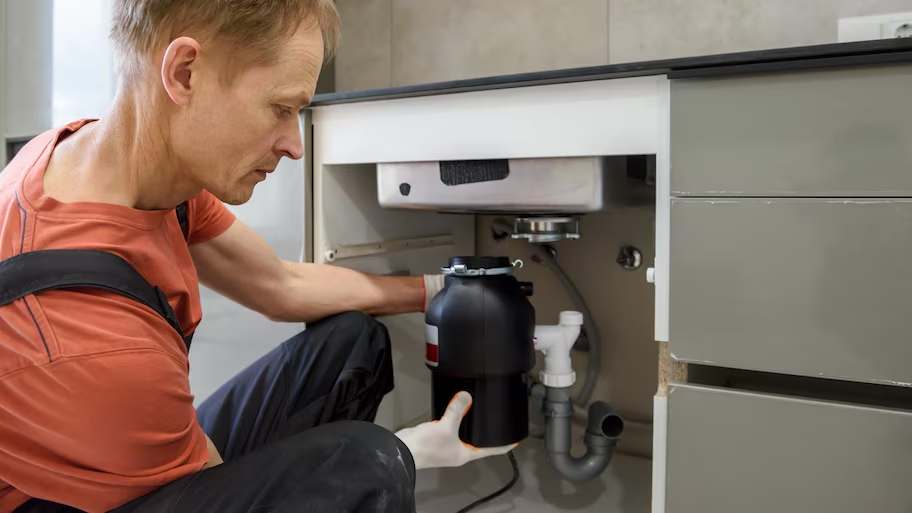In this article in the next paragraph you will find some very good points related to Why Is .

Garbage disposals are essential cooking area home appliances that help in disposing of food waste successfully. Nevertheless, a dripping waste disposal unit can be a frustrating and unpleasant issue to manage. Luckily, many leaks can be fixed quickly with a couple of easy steps. In this short article, we will certainly discuss exactly how to deal with a leaking waste disposal unit properly.
Introduction
Garbage disposals are mounted under cooking area sinks and are created to shred food waste right into smaller sized pieces, allowing it to go through the pipes system quickly. While these tools are usually dependable, leaks can happen in time because of deterioration, loose links, or damage to the device.
Typical Root Causes Of Leaks in Trash Disposals
Worn Seals and Gaskets
Seals and gaskets play an essential role in protecting against water from leaking out of the waste disposal unit. Over time, these components can deteriorate, resulting in leakages around the disposal system.
Loose Links
The links in between the waste disposal unit and the plumbing system can end up being loose gradually, creating water to leakage out throughout procedure.
Splits or Holes in the Disposal Unit
Physical damage to the garbage disposal, such as fractures or openings in the housing, can likewise lead to leaks.
Identifying the Source of the Leak
Before trying to deal with a dripping waste disposal unit, it is necessary to identify the resource of the leakage. This can commonly be done via aesthetic evaluation or by conducting simple examinations.
Visual Assessment
Examine the garbage disposal unit meticulously for any type of signs of water leak. Pay close attention to areas around seals, gaskets, and connection points.
Evaluating for Leakages
One means to examine for leakages is by running water via the disposal device and checking for any noticeable indicators of leak.
Devices and Products Needed for Taking Care Of a Dripping Garbage Disposal
Before beginning the repair procedure, collect the needed tools and materials, consisting of a screwdriver, flexible wrench, plumbing technician's putty, substitute seals or gaskets, and epoxy or patching material for repairing splits or holes.
Step-by-Step Guide to Dealing With a Leaking Garbage Disposal
Shut off the Power
Before trying any type of repairs, ensure that the power to the waste disposal unit device is turned off to prevent the danger of electrical shock.
Situate the Leak
Recognize the specific area of the leakage and identify the cause.
Tighten Links
Use a wrench to tighten up any loosened links in between the disposal device and the pipes system.
Change Seals or Gaskets
If the leakage is due to used seals or gaskets, remove the old components and change them with new ones.
Patching Cracks or Openings
For fractures or holes in the disposal device, use epoxy or a suitable patching product to seal the damaged location.
Testing the Waste Disposal Unit After Repair Service
As soon as the repair work is full, test the garbage disposal by running water via it to make certain that the leak has been resolved.
Preventive Maintenance Tips to Prevent Future Leakages
To stop future leaks, it is important to do normal upkeep on your garbage disposal. This includes keeping it clean, staying clear of placing non-food items or tough items down the disposal, and regularly looking for leakages or other concerns.
Final thought
In conclusion, dealing with a leaking garbage disposal is a fairly straightforward process that can be finished with fundamental tools and materials. By complying with the steps laid out in this short article and practicing precautionary maintenance, you can maintain your garbage disposal in good working condition and avoid expensive fixings in the future.
HERE’S HOW TO FIX YOUR GARBAGE DISPOSAL
WHAT TO DO IF SOMETHING IS STUCK IN YOUR GARBAGE DISPOSAL
If the impeller won’t turn, there’s probably something stuck in the disposal. It could be a steak bone or peach pit, although plumbers report pulling all sorts of inappropriate objects out of disposals, such as bottle caps or aluminum foil. Make sure power to the disposal is off, and look inside to see if you can see the source of the jam.
Never stick your fingers in a disposal. Pull out anything you see with tongs or pliers.
If the disposal still won’t work, it may be time to call a plumber or consider buying a new disposal. GEM Plumbing & Heating is here for all of your garbage disposal needs.
WHAT TO DO IF YOUR GARBAGE DISPOSAL DRAIN IS CLOGGED
Take everything out from underneath your sink and put a bucket or other container under your disposal to catch any water that drains out. Disconnect your disposal from the power supply. If it’s plugged into a wall outlet, unplug it. If it’s hardwired into an electrical box, go to the electrical panel and turn off the breaker for the disposal. Pour ¼ cup of baking soda into the drain, followed by ½ cup of white vinegar. Give the solution a few minutes to fizz and do its work. Look into the disposal with a flashlight to see if you can see an object that might be causing the clog. If you see it, remove it using tongs or pliers. MORE TIPS ON DEALING WITH A CLOGGED GARBAGE DISPOSAL
Never use drain cleaner in a garbage disposal. It can damage the plastic parts inside the disposal. You can also be splashed with the caustic liquid while working to clear the clog. Beware! Never stick your fingers into a garbage disposal. Trust us — not a good idea. In many instances, your dishwasher drains through your garbage disposal. This allows the disposal to grind any large food particles that may be drained out of your dishwasher. There are some jurisdictions, however, where the plumbing code prohibits such a connection. WHAT TO DO WHEN YOUR DISHWASHER DRAINS THROUGH THE DISPOSAL
Run some water in the sink so your plunger has at least a ½-inch of water to create a seal and plunge vigorously up and down several times. You may need to repeat this several times. Run hot water down the drain to clear any residue that remains.

Hopefully you enjoyed reading our section on Why Is . Thanks so much for spending some time to read through our post. Enjoyed reading our write-up? Please share it. Help others discover it. I thank you for reading our article about Why Is .
Schedule A Service